Humbly share our latest work led by @himanshuchhillar.bsky.social my phd student
And thanks to all collaborators Henk-jan @brunongou.bsky.social @jonathandgjones.bsky.social
23.10.2025 23:51 — 👍 19 🔁 10 💬 0 📌 0
merci Camille !
16.10.2025 17:44 — 👍 0 🔁 0 💬 0 📌 0
4\ We found a class of immune receptors enriched in ferns. According to the features you are looking at, they could be CC-NLRs, or potentially a new class of intracellular immune receptors. They remain to be characterized … (drop us a message if you are interested in doing that with us ⬇️) 4/4
13.10.2025 08:31 — 👍 1 🔁 0 💬 0 📌 0
3\ Ferns reproduce via alternance of gametophytes (💚 algae-looking tiny plants) and sporophyte (🌿dominant phase, the form we are most familiar with). For some pathogens, gametophytes are more resistant than their sporophyte. 3/4
13.10.2025 08:31 — 👍 1 🔁 0 💬 1 📌 0
2\ We tested many ferns with many filamentous microbes and report several pathosystems 2/4
13.10.2025 08:31 — 👍 1 🔁 0 💬 1 📌 0

Exploring fern pathosystems and immune receptors to bridge gaps in plant immunity - BMC Biology
Land plants include angiosperms, gymnosperms, bryophytes, lycophytes, and ferns, each of which may deploy distinct strategies to resist pathogens. Here, we investigate fern-pathogen interactions by characterizing novel pathosystems and analyzing the diversity of fern immune receptors. A collection of fern species was inoculated with a diverse set of filamentous microbes, and disease symptoms were assessed. We further leveraged published genome mining tools to analyse the diversity of receptor-like kinases, receptor-like proteins (RLKs/RLPs) and nucleotide-binding and leucine-rich repeats (NLRs), along with key immune signalling components, in ferns. Our results reveal that ferns exhibit a range of responses to pathogens, including putative non-host resistance and more specific resistance mechanisms. Among ten ferns tested, Pteris vittata displays the broadest spectrum of pathogen compatibility. Genome mining indicates that ferns encode a diverse repertoire of putative immune receptors, antimicrobial peptides, and mediators of systemic acquired resistance. Ferns possess numerous RLKs/RLPs, resembling those required for cell-surface immunity in angiosperms. They also encode diverse NLRs, including sub-families lost in flowering plants. These findings provide insights into disease resistance evolution and open promising perspectives for crop protection strategies.
1\ bmcbiol.biomedcentral.com/articles/10....
🌿🌿Our article on fern immunity has been peer-reviewed 🌿🌿
Thanks to @madeleinebaker.bsky.social @kellerjeanphd.bsky.social @maximebonhomme.bsky.social @pierremarcdelaux.bsky.social and @jacquet-chris.bsky.social
a quick thread 🧵 1/4
13.10.2025 08:28 — 👍 28 🔁 19 💬 1 📌 3
A first dive in fern x pathogen interaction! More to come!
Congratulations @baptistebio.bsky.social @jacquet-chris.bsky.social et al.!
09.10.2025 15:47 — 👍 21 🔁 11 💬 0 📌 0
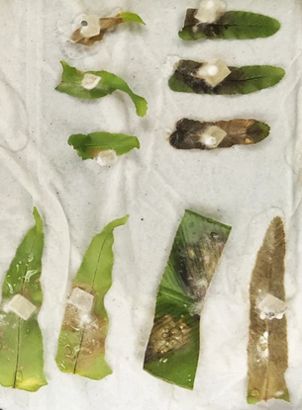
Various ferns species inoculated with S. sclerotiorum.
Want to see ferns under attack and how they respond to pathogens? Check out our latest paper!
doi.org/10.1186/s129...
Congrats on this huge team effort to @baptistebio.bsky.social @madeleinebaker.bsky.social @kellerjeanphd.bsky.social @maximebonhomme.bsky.social @pierremarcdelaux.bsky.social
09.10.2025 15:40 — 👍 31 🔁 23 💬 0 📌 2
~12 years after we coined it EPP1 with @oswaldovaldesl.bsky.social one afternoon when we were postdoc with @jeanmichelane.bsky.social!
Congrats @melaniekrich.bsky.social @tatiana-vernie.bsky.social et al. for the hard work!
EPP1 is the fourth member of the Common Symbiosis Pathway 🍄🌱!
06.10.2025 15:44 — 👍 35 🔁 19 💬 2 📌 0

VACANCY - Independent research fellowships leading to tenured positions
We’re inviting applications from outstanding researchers who either hold, or wish to apply for, Independent Research Fellowships.
APPLICATION DEADLINE: 10 November 2025
Click here to apply: jic.link/Fellows
03.10.2025 15:11 — 👍 18 🔁 29 💬 1 📌 2

Page 11 of the Sunday Post. With story 'Fossil find is modern-day Jurassic spark'. The title image is of dinosaurs and below is an image of fossil wood, and a photograph of Anajú Sagasti and Sandy Hetherington
Our recent paper @newphyt.bsky.social @anajusagasti.bsky.social @instmolplantsci.bsky.social is featured today in the Sunday Post!
Thanks Sally McDonald for your piece helping to promote and communicate Scotland’s rich fossil heritage
nph.onlinelibrary.wiley.com/doi/10.1111/...
21.09.2025 11:11 — 👍 42 🔁 17 💬 1 📌 0
congratulations Shanshan
04.08.2025 09:52 — 👍 0 🔁 0 💬 1 📌 0
Super excited to share our new preprint! 🎉 This project has been an incredible learning experience, thanks to the amazing lab and wonderful people I get to work with. Huge thanks to my supervisor! @plantevolution.bsky.social
04.08.2025 07:41 — 👍 26 🔁 9 💬 1 📌 0
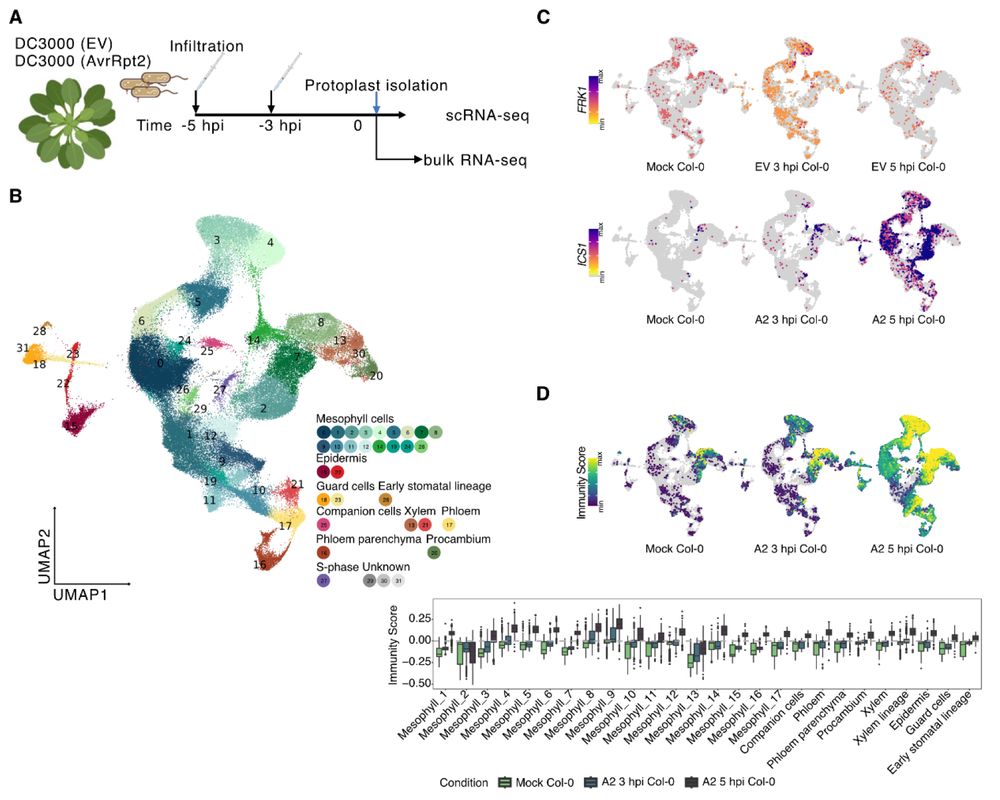
1/3 New preprint led by Shanshan Wang, in collaboration with the Timmermans lab.
Several groups have presented sc/snRNA-seq analyses of Arabidopsis leaves after bacterial infection before. Is there anything left to discover? Turns out: Yes.
#plantscience
www.biorxiv.org/content/10.1...
02.08.2025 14:46 — 👍 73 🔁 39 💬 2 📌 1
🦠🧍♀️From bacterial to human immunity.
We report in @science.org the discovery of a human homolog of SIR2 antiphage proteins that participates in the TLR pathway of animal innate immunity.
Co-led wt @enzopoirier.bsky.social by D. Bonhomme and @hugovaysset.bsky.social
www.science.org/doi/10.1126/...
24.07.2025 18:22 — 👍 262 🔁 122 💬 9 📌 11
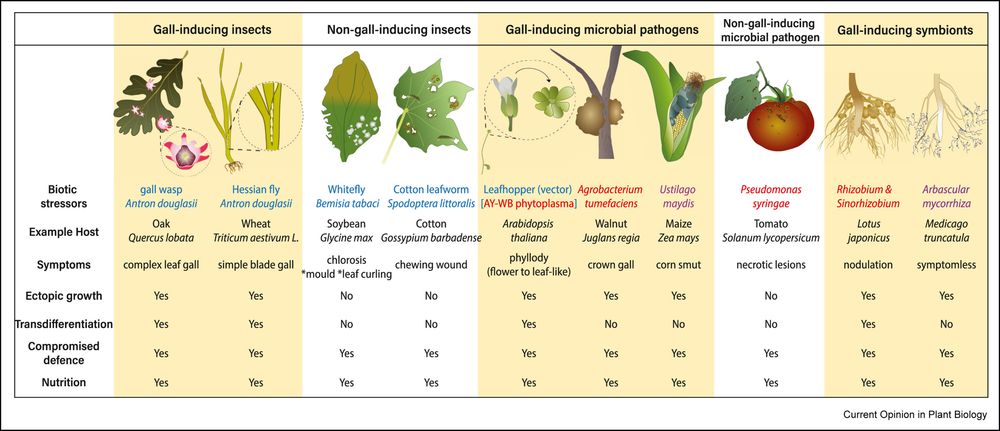
First Ma lab #GMI paper is now online! It‘s a mini-review on insect-induced plant #galls —their coolness and research potential! Plant galls induced by insects: Coordinated developmental reprogramming and defence manipulation www.sciencedirect.com/science/arti...
21.07.2025 12:06 — 👍 93 🔁 38 💬 6 📌 0
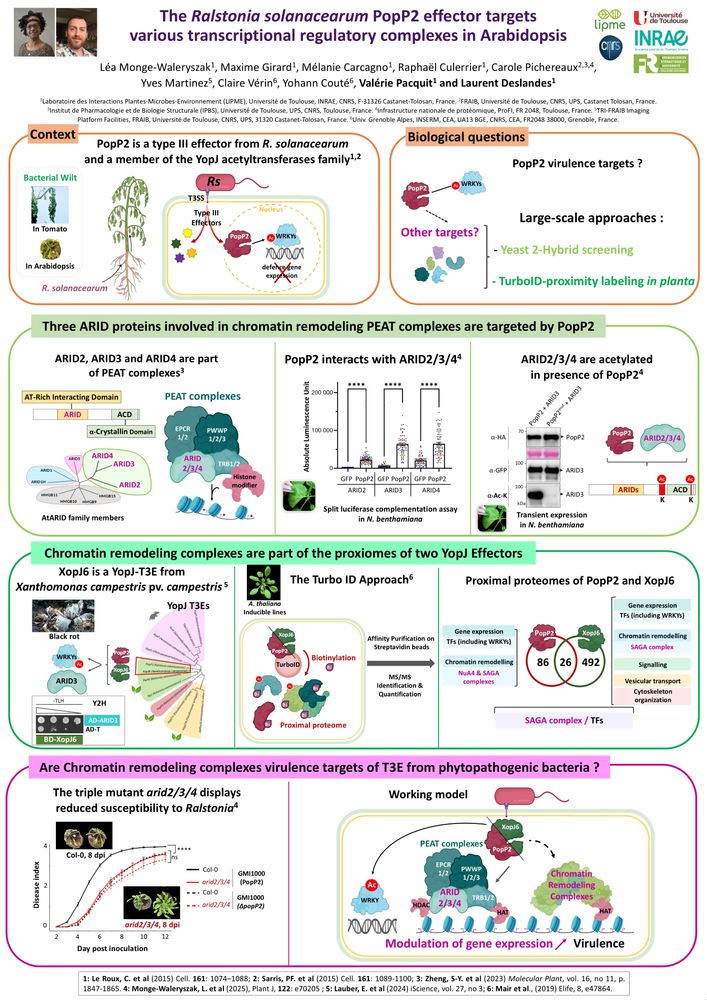
Are chromatin remodelling complexes targets of bacterial effectors PopP2 & XopJ6 ? Check out our work at #2025ISMPMI ! P-163 presented Wednesday afternoon by my amazing PhD supervisors Laurent Deslandes & Valerie Pacquit. @lipme-toulouse.bsky.social @ismpmi.bsky.social
15.07.2025 15:23 — 👍 11 🔁 7 💬 2 📌 0

@federicalocci.bsky.social presents the fonction of non canonical TIR immune receptors #2025ismpmi
14.07.2025 14:26 — 👍 2 🔁 1 💬 0 📌 0
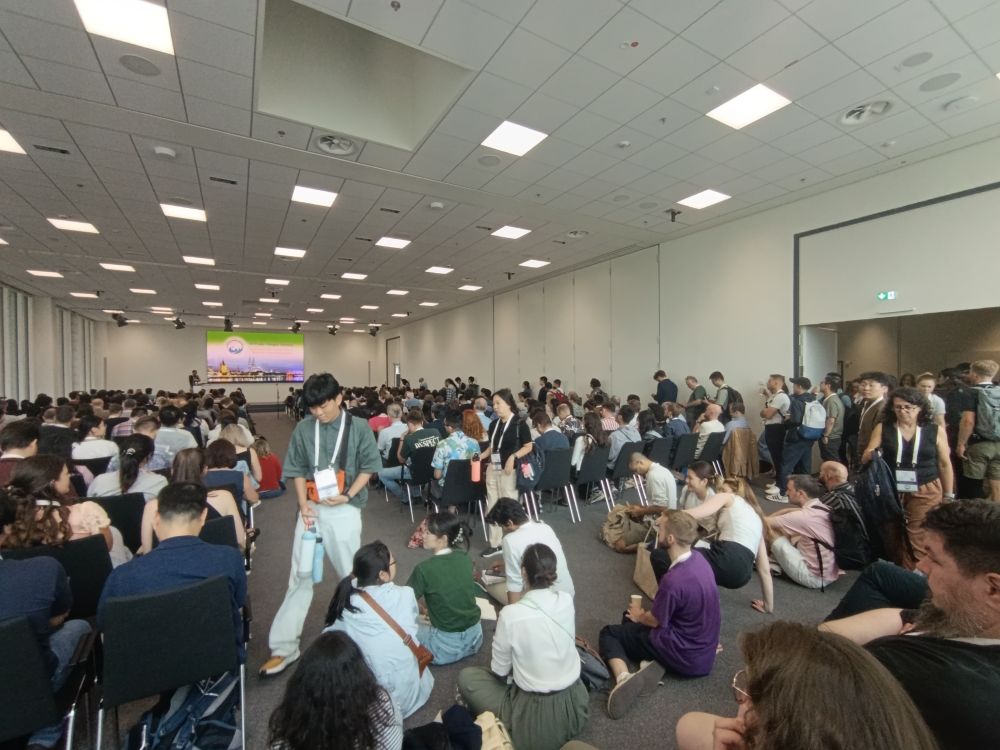
Full room for @keehoonsohn.bsky.social presentation #2025ismpmi
14.07.2025 13:38 — 👍 8 🔁 4 💬 0 📌 0

Fantastic plenary talk by Nuria Coll @bactodeath.bsky.social on how to use metabolic engineering to make plants resistant to vascular pathogens #2025ISMPMI
14.07.2025 07:29 — 👍 21 🔁 4 💬 0 📌 0
Poster at #ISMPMI2025 from collaborations with @sainburylab.bsky.social #Proteomics group: P011 ( @isabelmonte.bsky.social ), P073 ( @HeeKungAng group), P086 & P034 (Zipfel group) P101 ( @tolgaboz.bsky.social ) and P130 ( @jonathandgjones.bsky.social and XiaoLin)
14.07.2025 06:42 — 👍 5 🔁 4 💬 0 📌 0

@geminiteamlab.bsky.social reminds us the importance of virology in plant immunity research #2025ismpmi
14.07.2025 07:08 — 👍 10 🔁 4 💬 0 📌 0
PhD student at @TheSainsburyLab.bsky.social working on NLR bioengineering and computational prediction of immune receptor activities w/ @KamounLab.bsky.social . 🇦🇷🏳️🌈 (he/him)
Institut de Biologie de l'Ecole Normale Supérieure @normalesup.bsky.social
ENS-PSL/CNRS/INSERM
#IBENS
🔗 ibens.bio.ens.psl.eu/
Plant biologist working on #symbiosis and #evolution in Toulouse (FR)
Interested in #evolution #plantsci #charophytes | uses #molbiol #genomics #bioinformatics | Professor
@unigoettingen.bsky.social
http://orcid.org/0000-0003-3507
MAdLand is a DFG-funded research consortium exploring the molecular mechanism behind the transition from water to land, from alga to land plant.
Learn more on our Website: madland.science
👩🔬 The Institut Pasteur is a leading global biomedical research institute.
🔬 Explore with us the frontiers of biomedical research
🧪 Follow us to uncover groundbreaking discoveries
🌍 Join a community passionate about progress and open science
Postdoc @Weigelworld at Max Planck Institute for Biology Tübingen, studying plant immunity with various approaches
Fascinated by insect-induced plant galls! Cell biologist, interested in solving molecular puzzles in defense & developmental signalling. PI at @gmi Vienna Biocenter
Biologist, Post-Doc in Alga Zuccaros lab at the university of Cologne- interested in plant-microbe interactions, plant microbiota and inter-kingdom synergism
🇻🇳 PhD in plant science, particularly interested in plant-microbe interactions in relation to climate change.
PI/ Group leader/Scientist II/ Plant Pathology and Host Plant Resistance.
Expertises: plant-microbes interactions, microbiome, genome editing, pathogen genomics, plant breeding
Ph.D student at the Université de Sherbrooke. Plant virus enthusiast. Occasionnal runner/climber and gamer.
Interested in fungi and plant-pathogen interactions🌱 currently working with @talbotlabtsl.bsky.social 🇮🇨🇦🇷🇬🇧
The Sorek Lab
Weizmann Institute of Science, Israel
https://www.weizmann.ac.il/molgen/Sorek/
Center for Plant Molecular Biology, University of Tübingen (Germany) supporting Independent Research Groups focusing on fundamental plant molecular biology since 1999
A Postdoc at The Sainsbury Laboratory, Norwich 🇬🇧 working on vegetable NLR networks 🥬 & An instructor at Sciences Faculty (Biology), Kasetsart University, Thailand 🇹🇭
Postdoctoral scientist @ Plant Health Institute of Montpellier (@phimresearch.bsky.social) & Centre de Biologie Structurale.
Biochemical/structural studies of proteins to understand plant disease/immunity & improve crop health 🌾🌱
She/her. Views my own.
IJPB: From knowledge to Innovation in Plant Sciences, located at INRAE Centre IdF - Versailles-Saclay


















